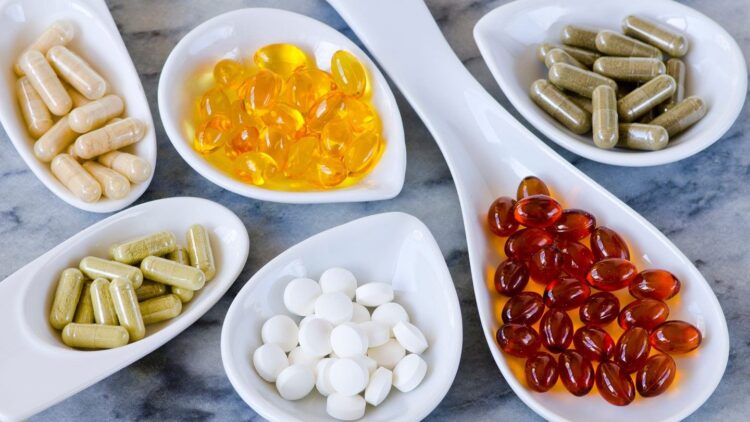Nowadays, more and more individuals are looking into plant-based protein sources for their daily intake. A plant-based diet is one that is full of nutrition, vitamins and minerals, and plenty of sustainable protein sources. For the busiest employees around, getting enough protein can be a challenge. With a plant based diet, there are still plenty of foods to meet this need while getting the most out of your meals. Here are some of the top plant based protein sources that employees should consider adding to their diet today:
The Top 5 Plant-Based Protein Sources
1. Legumes
Legumes such as beans, peas, peanuts, chickpeas and lentils contain high amounts of both fiber and proteins. Studies have found that legumes have up to 20 grams per half cup serving when cooked. When combined with whole grains or vegetables they act as complete proteins providing all nine essential amino acids that our bodies cannot produce on their own.
2. Nuts And Seeds
Raw or crunchy nuts like almonds, walnuts and brazil nuts are great options for those looking for healthier snacking options that still provide an adequate amount of healthy fats and proteins. Seeds such as chia, sesame sunflower and pumpkin seeds also provide a lot of excellent macro nutrients including omega 3 fatty acids in addition to a good source of key vitamins & minerals. On average two tablespoons of these seeds contains about 8 grams of proteins making them great additions to salads or snacks throughout the day.
3. Leafy Greens
Leafy greens hold little carbohydrates but pack quite a powerful punch in terms of nutrition in general; especially when it comes to proteins. High concentrations may be found in kale, spinach & swiss chard providing between 4 – 6 grams per cup plain when cooked down; additionally they are packed with important micro nutrients like calcium & vitamin K. Another option would be sprouts from alfalfa, broccoli & radishes which can be added to salads or sandwiches alike.
4. Quinoa
Quinoa may not seem very familiar in comparison with other grains however It stands apart from its peers by being an actual complete protein source containing all nine essential amino acids making it unique among grains. Containing upwards 8 – 10+ grams per cup depending on how its cooked – quinoa makes an amazing boost during lunch hours allowing flexibility between other grains like sushi rice, couscous barley & oats.
5. Soy Products
Soy products such as tofu, tempeh edamame contain high levels of both fiber & proteins being able to go between 14 – 17+grams per serving depending on how it’s consumed. Tofu can be used across sectors either sweet or savory due to its ability absorb whatever flavor profile you choose giving it extreme versatility among vegetarian dishes whether you want something quick within 30 minutes or its time-consuming entrees. Most importantly incorporating soy again helps increase overall nutrient density, bioavailable vitamins/minerals recovery from highly intense workouts due to soy’s Isoflavones concentration level composition.
Conclusion
Today’s employee has many demands both at home and at work and getting enough nutritious food can sometimes become a challenge – especially if you’re on a strict plant-based diet. With these five amazing sources, today’s bustling employee can still get dynamic dietary benefits without compromising flavor profiles building foundations towards the healthiest lives possible.
FAQs
Q1: Can I eat legumes every day?
A1: Yes, absolutely. You can make delicious chili recipes using legumes and enjoy your favorite dips made even creamier thanks to chickpeas. You should take into account your caloric needs depending on whether you’re trying to gain weight lose fat or remain stable keeping health benefits at optimal thresholds.
Q2: How much fiber does quinoa contain?
A2: A single cup (185g) worth contains about 5g Dietary Fiber which is considered very high compared with other grains significantly accepted consumption parameters.
Q3: Is Edamame Healthy?
A3: Closely related, yes, due to Edamame’s mineral content ranging anywhere from Calcium, Magnesium, Iron & Copper. Although potassium sodium phosphorus zinc mangness also cholesterol ratios skew slightly higher than most expectations. Many establishments support menu items with edamame due to its health benefits.
Q4: What Is The Healthiest Nuts For Snacking?
A4: Generally speaking, walnuts would be at the forefront due to their Omega Fatty Acid ratios supplying unsaturated benefits. They can reduce inflammation and improve brain function. Other options such as Cashews, Almonds, Pistachios, and Pecans are also beneficial for maintaining a balanced diet.
I hope you like reading on What Are the Top Plant-Based Protein Sources for Today’s Employees?.





